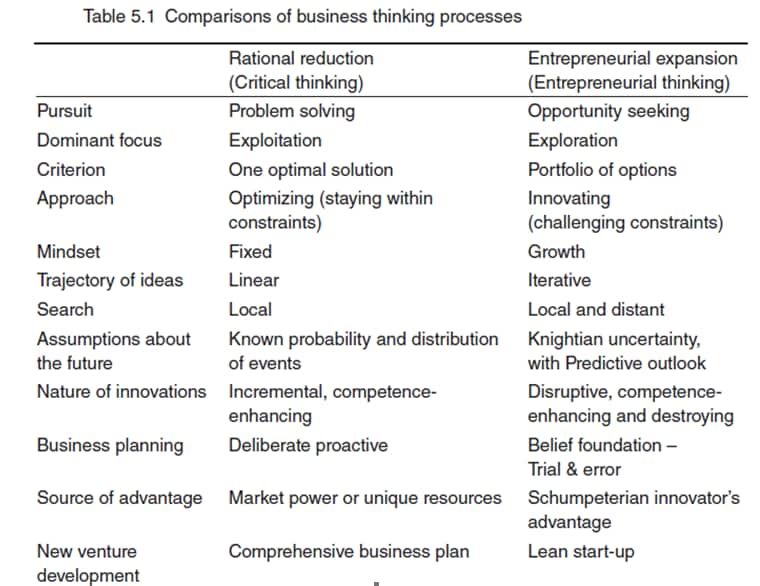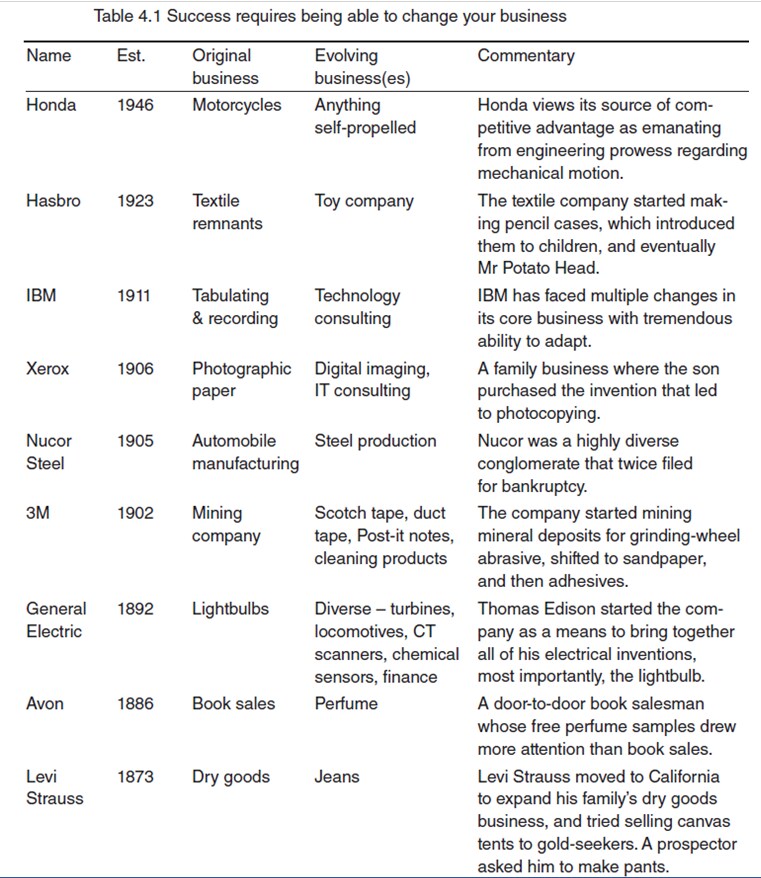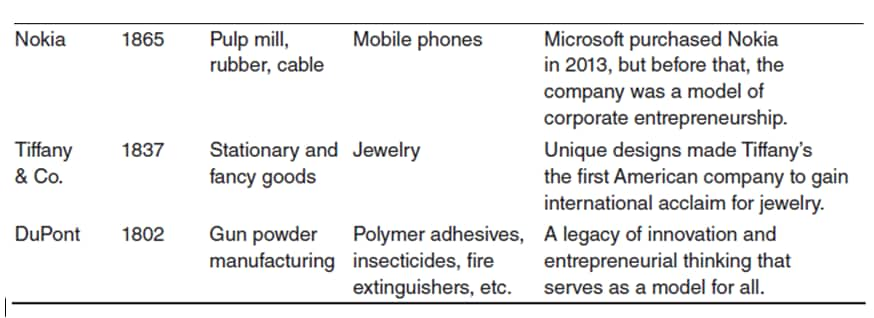
3 strategies to survive in an ever-changing business environment
Reality today is akin to the Red Queen effect from Alice in Wonderland: running as fast as you can just to stay in the same place

Former Intel Chief Executive Officer (CEO) Andy Grove famously said, “only the paranoid survive.” Clearly, in a disruptive environment, being paranoid isn’t enough: How does a business prepare itself for the possible threat of new incumbents? To address this question, I researched some prominent long-surviving firms and found a consistent theme: they all proactively changed their strategy over time to respond to the changing environment.
Traditional strategic planning seeks to pre-plan how the world will be in years to come—at a time when the reality is more akin to the Red Queen effect from Alice in Wonderland: running as fast as you can just to stay in the same place. Faced with dynamic environments, firms need to be nimble, innovative and entrepreneurial, just to survive.
Unfortunately, most firms continue to undertake an annual strategic review and proceed to adopt rigid planning. Within this paradigm, entrepreneurial ideas and innovations are typically scrutinised through traditional problem-solving lenses, which rely on prioritising solutions that are familiar to management, and which focus on solutions that will result in known or highly predictable outcomes. Generally, the process is reductive in nature, beginning with an inventory of alternatives, followed by competitive pruning aimed at eliminating risk and increasing predictability.

This process relies on identifying resources, capabilities and skills that can be leveraged to take advantage of known opportunities and to compensate for known threats. Leaders focus on questions such as, What are our competitors doing? What do similar firms in different markets do? What have we done in the past?
In the short term, if environmental conditions such as market need, technology, economic conditions and demographics are stable, this approach is completely rational and can still be helpful in finding the best solution. But if the intention is to benefit a firm over the long term, rational decision-making tied to rigid plans is simply not sufficient to drive success. What is required? Entrepreneurial thinking.
I define entrepreneurial thinking as a process whereby entrepreneurs and entrepreneurial teams—whether conceiving a start-up or a corporate venture, or just searching for non-standard approaches to creating value under conditions of uncertainty—think through opportunity discovery and opportunity creation in pursuit of creating value.
There is a rising debate in academic circles regarding whether business opportunities are discovered or created. Let’s explore this by considering a modern exemplar of strategic entrepreneurship: Apple. Were the key opportunities it embraced there for the taking, or did Apple create them from thin air?
1. The personal desktop computer (Apple I): Arguably, Apple created the personal computer market at a time when people could not really get their heads around the idea of combining an electronic typewriter with a game console and a calculator.
2. The Macintosh: This largely entailed discovery of the gap between what the personal desktop computers of the day were offering and what the customer was starting to see as their potential.
3. The iMac: This computer with an integrated monitor and keyboard (but without a floppy disk slot) was a step forward in convenience and style that was again a discovery of a missing link for existing customers.
4. iTunes: This was clearly a discovery in that it served to replace the illegal pirating of music.
5. iPod: While there was an element of discovery in this, I weigh in on the creation side, for the iPod was a unique device that celebrated a new age in music listening – 1,000 songs in a small box, white earphones, a one-disc tool for accessing content, and so on. A truly amazing advance in industrial design.
6. iPhone: This was a discovery of the somewhat predictable merging of smartphones, the iPod, the camera, and so on.
7. iPad: We’re back to creation, in that there was clearly no market for tablets (or at least only a struggling market for earlier attempts). Indeed, the iPad is interesting because of the many predictions of failure for what seemed to be an inferior computer that would not support plug-ins, printers, common software such as word processing, and the like.
If opportunities are primarily discovered, then a firm seeking to succeed at corporate entrepreneurship should focus its training, resources, and energy on scanning the marketplace for unexploited or under-exploited opportunities. On the other hand, if opportunities are created, then the firm should focus more on research and
development, generating products or services that can create demand. The evidence from Apple suggests a need to develop both capabilities: opportunity discovery and opportunity creation.

Opportunity Discovery - Market intelligence is king in the world of opportunity discovery. But when I say market, I mean much more than the customer market. I mean markets in an all-encompassing sense that includes supply markets, sales markets, complementary markets, and even unrelated markets.
In 2005, W. Chan Kim and Renée Mauborgne of INSEAD authored a groundbreaking business book titled Blue Ocean Strategy: How to Create Uncontested Market Space and Make the Competition Irrelevant. A key component of the Blue Ocean thesis is opportunity discovery. The authors provide a framework, referred to as ‘the six paths to find new market space’. Those paths entail exploration across:
(1) alternative industries,
(2) strategic groups,
(3) customers,
(4) complementary offerings,
(5) functional or emotional appeal, and
(6) timelines.
By exploring and adopting practices from alternative industries, firms can discover new ways to approach customer needs. For example, Southwest Airlines examined bus and private car transportation alternatives to identify key elements of the Southwest discount point-to-point model. This led to it becoming the largest airline in the world, as determined by market capitalisation.

Jim Dewald is the dean and associate professor of Strategy and Entrepreneurship at the Haskayne School of Business, University of Calgary
Strategic grouping distinguishes product or service offerings within a specific industry. For instance, management consulting can come in the form of a single proprietor (as a member of a single proprietor strategic group) or a multinational such as McKinsey or Boston Consulting Group (BCG). In both cases, the firm receives management consulting, and without distinguishing the quality of each, there are significant differences in resource capabilities, scope of services, multi-location offerings, and so on. Consider the beer industry, which has strategic groups ranging from micro-breweries to global giants Anheuser-Busch InBev and SABMiller. Consumers buy beer from each, but in terms of brewing, bottling, distribution, sales, advertising, and so on, they are radically difference businesses.
Without walking through each of the six categories, it is important to note that Kim and Mauborgne’s framework provides a great starting point for firms that are looking outside the box for breakthrough opportunity. This systematic approach to discovering opportunities can be adopted by any firm in any industry.
Opportunity Creation - Creating opportunities from scratch is often tied to the firm’s resource base—more specifically, to R&D, new product or service development and engineering. Opportunities are created by developing new products or services that reflect what customers will want—not what they are seeking today. In support of this approach, Robots & Pencils CEO Michael Sikorsky argues that planning is an important component of opportunity creation that must be taken seriously and be pursued with diligence. It is instructive here to quote Sir Winston Churchill: “Plans are of little importance, but planning is essential.”
When creating opportunities, it is essential to make plans and look toward the future. Of course, the risk quotient will be much higher for opportunity creation because the entrepreneur is presenting something completely new to what is often not an existing customer, but a forecasted one. But the reward can be much greater if the effort succeeds. Opportunity creation more accurately reflects the romantic vision of entrepreneurial genius – the garage entrepreneur who creates a great invention that everyone just has to have.
Longevity is the capacity to change, not to stay with what you’ve got. Too many companies build up an internal commitment to their existing businesses. Rather than changing, they find it easier to just keep doing the same things that brought them success. They codify why they’re successful; they write guidebooks; they create teaching manuals—they create whole cultures around sustaining the model. That’s great, until the model gets threatened by external change; then, all too often, the adjustment is discontinuous. - Lou Gerstner, Chairman and CEO of IBM (1993–2002)
Opportunity creation connects more directly with conventional theories of invention leading to innovation. Invention is the creation of something new; innovation is the commercialisation of that invention. Invention was creating the stickiness that led to the innovation of 3M Post-its; invention is the internal combustion engine, which led to the innovation of cars, motorcycles, lawn mowers, airplanes, and so on. This is the traditional world of patents and systematic invention, leading to innovation paths – the world so often encountered in any textbook on innovation. Some refer to this as the ‘push’ approach to innovation, in the sense that the invention pushes the idea into a marketable innovation.
W.L. Gore, the makers of Gore-Tex fabric and various products based on polytetrafluoroethylene, is another company that personifies the practice of strategic entrepreneurship. After 16 years in technical positions at DuPont, Bill Gore founded the company with his wife Genevieve Gore. Their dream was to found an organisation that ran democratically, without bosses telling people what to do, but with people self-selecting which projects they wanted to work on, who would be on their team, and so on.
[This article has been reprinted, with permission, from Rotman Management, the magazine of the University of Toronto's Rotman School of Management]















